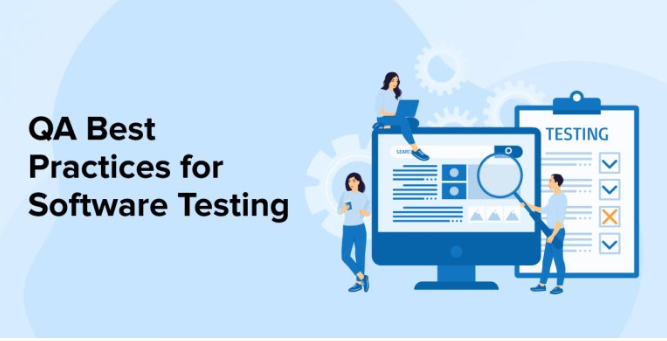You began as a Junior BA, advanced to BA, then to Senior BA, and now you are a Lead BA on a project collaborating with other BAs. How do you proceed? Some of the Dos and Don’ts of being a Lead BA are the main topic of this article. There are elements of science and art in it. To learn more, check out the business analyst course.
Requirements Governance
1.Who Do You Take Direction From Your PM Or Your Business Analyst Manager
As a Lead BA, you should begin by creating your personal requirements governance. Who do you notify on status and who do you consult for requirements guidance—your BA Manager or the Project Manager (PM)? The situations I’ve run into are:
- As the Lead BA, you follow the PM’s instructions on your BA requirements and inform your BA Manager of any updates.
- As the Lead BA, you obtain your BA requirements directly from your BA Manager and inform your PM of any adjustments.
- The third and most common scenario is when your BA Manager and the PM both believe that you follow their instructions regarding requirements and inform each other of your progress.
Tip: The truth is far too many Lead BAs neglect to have this conversation at the outset and then find themselves in a difficult situation when the third scenario above arises during the project. Instead, start the conversation with your BA Manager right at the start of the project and clearly establish the relationship you’ll have with him or her and with the PM. If the solution is to take your requirements direction from them, schedule a brief meeting with your BA Manager and the PM to begin building this connection. Since PMs generally don’t appreciate this arrangement, it is best to address it in person. If the solution is to follow the PM’s requirements direction, then all you need to do is email your BA Manager to confirm the meeting and inform the PM that you will be reporting to them and, if necessary, receiving BA approach instruction from them.
2.Establish Your Role As Lead BA On The BA Team
Ensure that the BAs you will be supervising understand that you are the Lead BA and that they will collaborate with you in that role. There are two ways to convey this:
- Make sure the BAs you will be leading examine the project governance and that you are called out on it as the Lead BA.
- If your BA Manager is providing you with requirements guidance, ask them to email the BAs you will be supervising to let them know that you are the lead and will be directing the approach, among other things, to the requirements deliverables.
3.Start By Learning About Your BAs
In order to get a sense of the BAs’ level of competence in gathering, recording, and evaluating requirements as well as their familiarity with the project’s topic, you should first arrange brief meetings with them.
When working with senior business analysts (SBAs) who possess extensive expertise, your primary concern should be ensuring that everything is proceeding as planned and that they are adhering to the deadlines for their required job packages. You can provide them work packages with reasonably sophisticated and sizable specifications.
If you work with more junior business analysts, you will be more of a guidance/mentor; you will examine and give feedback on their needs on a regular basis, as well as mentor them on how to handle various requirement kinds such business rules and process flows documentation; Initially, keep their work packages’ scope limited to specific, well-defined requirements; have brief conversations with them regarding how things are progressing.
4.Develop A View Of The Requirements Work Packages
When a project is complicated and requires the creation of several “groups/categories” of requirements in order to meet its scope, a group of BAs usually get assigned to it. Recognize the project’s goals and drivers from the beginning and form an understanding of the work packages’ requirements. Several instances of this include:
a. Reaching regulatory compliance or achieving another goal connected to compliance:
- It might be necessary for you to review job packages that are aimed at adhering to various regulations.
- You might need to concentrate on the requirements for each department or Line of Business (LOB) to comply with the regulations if the compliance involves many departments or LOBs.
b. Developing and implementing a large technology system or platform:
- Work packages for various user groups may need to be examined; for instance, if the system is a workflow, work packages probably exist for back-office and customer-facing components as well as other components.
- It might be necessary for you to review requirements work packages that concentrate on various functional aspects. For instance, a direct investment platform’s customer-facing interface might have tools for trading, account holdings viewing, studying various stocks, etc.
5.Managing The Requirements Work Packages
a. Establish a view of the project schedules pertaining to the work packages requirements, taking into account factors like complexity. To do this, I prefer to use a matrix similar to this one, which is based on the requirements lifecycle (using the direct investment platform as an example): plan, elicit, analyse, document, and get sign-off (keep track of progress using Excel or Project).
b. Assign the BAs you’re leading to various work packages in accordance with your knowledge of them, and keep an eye on their progress as they complete their assignments.
6.Monitoring Progress And Connecting The BAs As A Team
It is discovered that having weekly meetings with a twist is the most efficient way to track my BAs’ development. The majority of people only provide a status report on how things are doing in relation to their timetables during their weekly meetings. The weekly meetings provide the BAs with an excellent opportunity to learn from and support one another. You can also encourage them to discuss any difficulties they are facing because someone else on the team might have already had a similar situation and know how to handle it. You invite them to share any successful methods they’ve discovered that could benefit other team members. Lastly, you request a quick summary of the criteria that each BA is working on from each of them. Since most projects involving a BA team share a shared objective, discussing requirements will frequently reveal overlaps or conflicts between needs and work packages that will facilitate the project’s more rapid progress.
Conclusion
By using these approaches, it will help you to become a more effective BA Lead. Check out the business analyst course online to learn more.

































